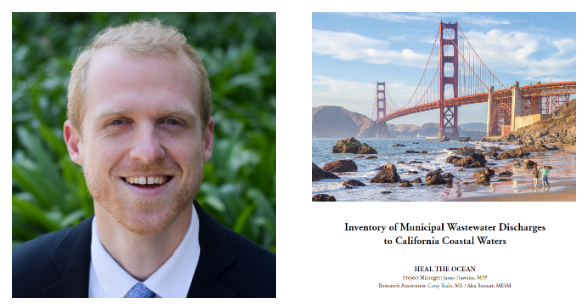James Hawkins, MMP (HTO Advisory Board Member) and his Inventory of California Wastewater Discharge.
A study published by Heal the Ocean, Santa Barbara, has been credited as a compelling factor in a Senate bill introduced in February 2019, that would require huge reductions in the volume of treated wastewater discharged into the Pacific Ocean and California estuaries.
SB 332, the Local Water Reliability Act, calls on wastewater treatment facilities to step up recycling, conservation, and efficiency to meet reduction targets of 50 percent by 2030 and 95 percent by 2040 for the amount of waste(d)water dumped into the ocean and other water bodies.
In announcing the introduction of SB 332, its authors, Senate Majority Leader Bob Hertzberg (D-Van Nuys) and Senator Scott Wiener (D-San Francisco), cited the amount of waste(d) water going into the ocean based on the groundbreaking study, Inventory of Municipal Wastewater Discharges to California Coastal Waters, authored by former HTO Policy Analyst (and now Advisory Board member) James Hawkins, MPP, and published by Heal the Ocean in September 2018.
As reported in the Los Angeles Daily News on February 20, 2019, SB 332 is expected to start the Senate committee review process next month, in April 2019.
Heal the Ocean will be participating in that review process, with our chief concern being that the higher recycling goals would produce an inordinate amount of toxic brine waste, for which there is no feasible technology for disposal. Wastewater plants cannot exceed pollution limits in their discharge permits. The problem of brine waste has been examined by Heal the Ocean in its report, Brine Waste: Issues, Disposal, and Reduction, which presents facts that mean SB 332 may be unattainable as written.


